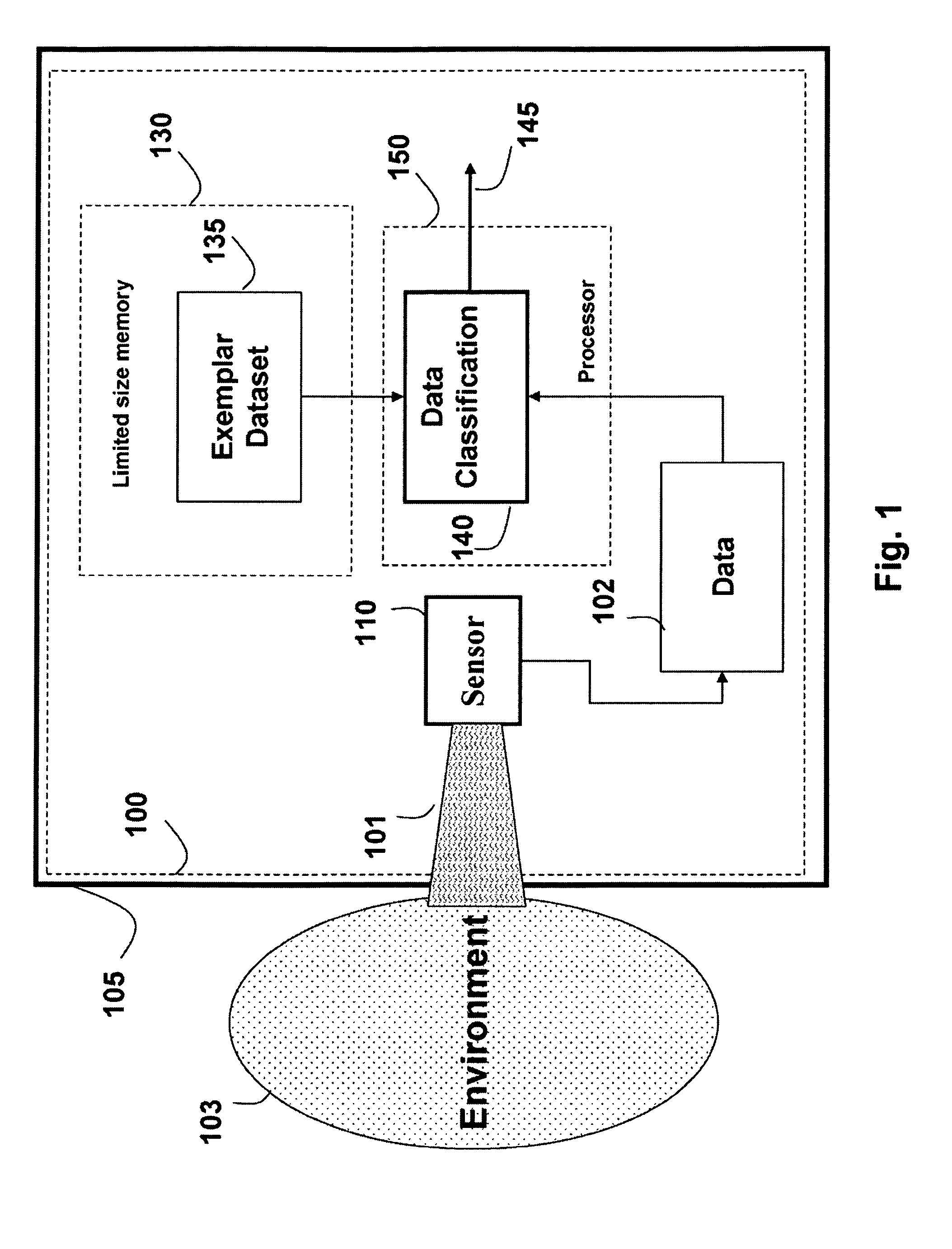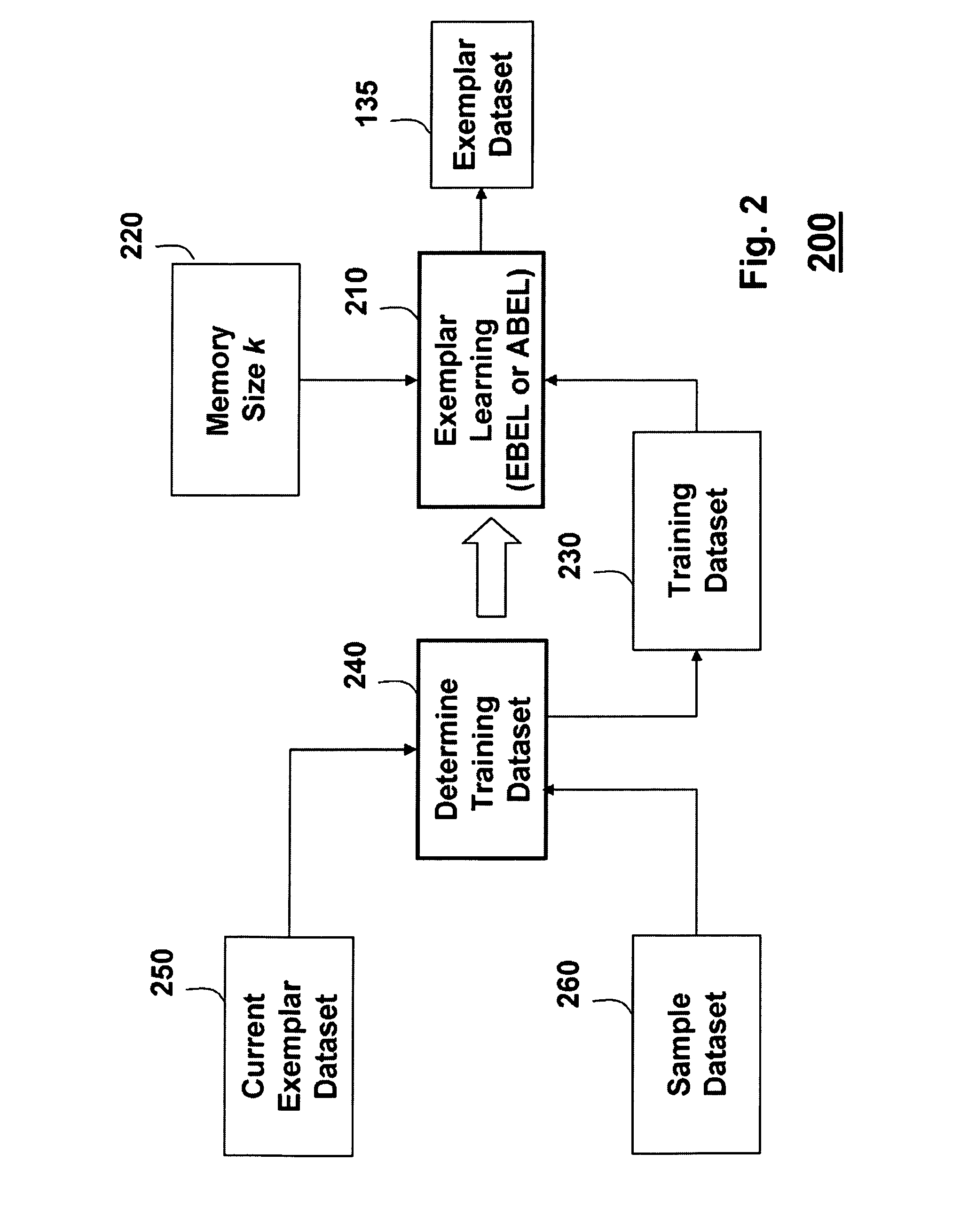Method and system for classifying data in system with limited memory
a technology of limited memory and data, applied in the field of data classification, can solve the problems of inability to store inability to use a large training data set, and inability to use a single classifier that works best, so as to minimize the loss of information, and minimize the effect of computational overhead
- Summary
- Abstract
- Description
- Claims
- Application Information
AI Technical Summary
Benefits of technology
Problems solved by technology
Method used
Image
Examples
Embodiment Construction
[0034]FIG. 1 shows a method and a system 100 for classifying an input signal 101 using exemplar learning (EL) according to embodiments of our invention. The system could be embedded in some other machine or device 105 or work undependably. The system 100 has a limited size memory 130. The input signal 101 is acquired by a sensor 110 and classified 140 in real-time.
[0035]The sensor 110 acquires the signal 101 from an environment 103. We use the term “environment” generally to mean anything that can be sensed, e.g., temperature, pressure, humidity, gas, liquid, solid, machines, acoustic and EM waveforms, camera images and the like. Typically, the environment relates to the operation of the device 105 in which the system 100 is embedded. The sensor generates data 102.
[0036]The data 102 are classified 140 to produce a data classification output 145. The data classification 140 can be performed by a processor 150. The data classification 140 uses an exemplar data set 135 to classify the ...
PUM
 Login to View More
Login to View More Abstract
Description
Claims
Application Information
 Login to View More
Login to View More - R&D
- Intellectual Property
- Life Sciences
- Materials
- Tech Scout
- Unparalleled Data Quality
- Higher Quality Content
- 60% Fewer Hallucinations
Browse by: Latest US Patents, China's latest patents, Technical Efficacy Thesaurus, Application Domain, Technology Topic, Popular Technical Reports.
© 2025 PatSnap. All rights reserved.Legal|Privacy policy|Modern Slavery Act Transparency Statement|Sitemap|About US| Contact US: help@patsnap.com



